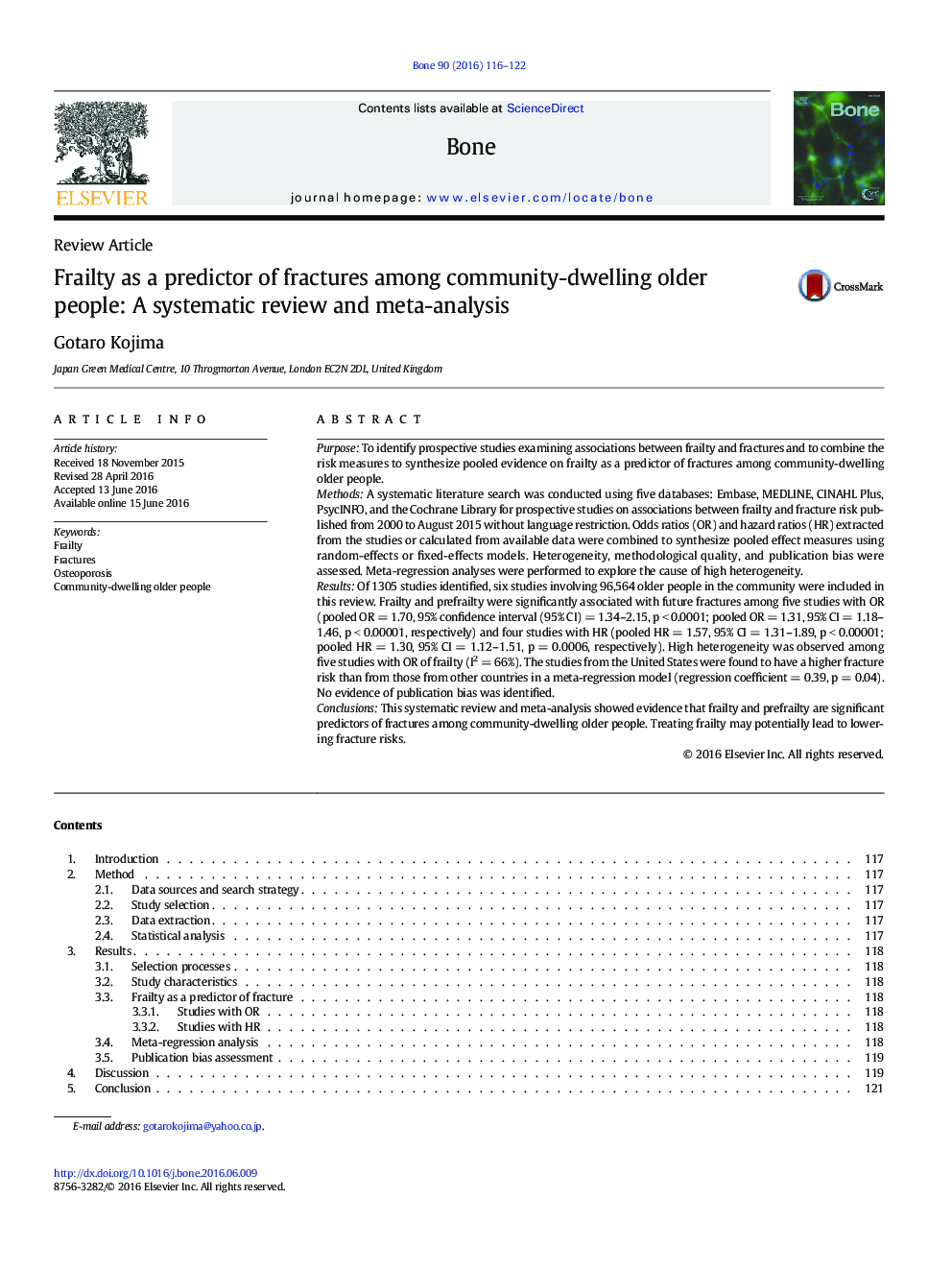| Article ID | Journal | Published Year | Pages | File Type |
|---|---|---|---|---|
| 5888796 | Bone | 2016 | 7 Pages |
â¢Fractures can cause detrimental physical and psychological impacts on older people.â¢Frailty may predict fracture, sharing various risk factors with osteoporosis.â¢The associations between frailty and fractures in the literature are inconsistent.â¢This study showed that frailty and prefrailty are significant predictors of fractures.â¢Treating frailty and prefrailty may lead to lowering the fracture risks.
PurposeTo identify prospective studies examining associations between frailty and fractures and to combine the risk measures to synthesize pooled evidence on frailty as a predictor of fractures among community-dwelling older people.MethodsA systematic literature search was conducted using five databases: Embase, MEDLINE, CINAHL Plus, PsycINFO, and the Cochrane Library for prospective studies on associations between frailty and fracture risk published from 2000 to August 2015 without language restriction. Odds ratios (OR) and hazard ratios (HR) extracted from the studies or calculated from available data were combined to synthesize pooled effect measures using random-effects or fixed-effects models. Heterogeneity, methodological quality, and publication bias were assessed. Meta-regression analyses were performed to explore the cause of high heterogeneity.ResultsOf 1305 studies identified, six studies involving 96,564 older people in the community were included in this review. Frailty and prefrailty were significantly associated with future fractures among five studies with OR (pooled OR = 1.70, 95% confidence interval (95% CI) = 1.34-2.15, p < 0.0001; pooled OR = 1.31, 95% CI = 1.18-1.46, p < 0.00001, respectively) and four studies with HR (pooled HR = 1.57, 95% CI = 1.31-1.89, p < 0.00001; pooled HR = 1.30, 95% CI = 1.12-1.51, p = 0.0006, respectively). High heterogeneity was observed among five studies with OR of frailty (I2 = 66%). The studies from the United States were found to have a higher fracture risk than from those from other countries in a meta-regression model (regression coefficient = 0.39, p = 0.04). No evidence of publication bias was identified.ConclusionsThis systematic review and meta-analysis showed evidence that frailty and prefrailty are significant predictors of fractures among community-dwelling older people. Treating frailty may potentially lead to lowering fracture risks.
